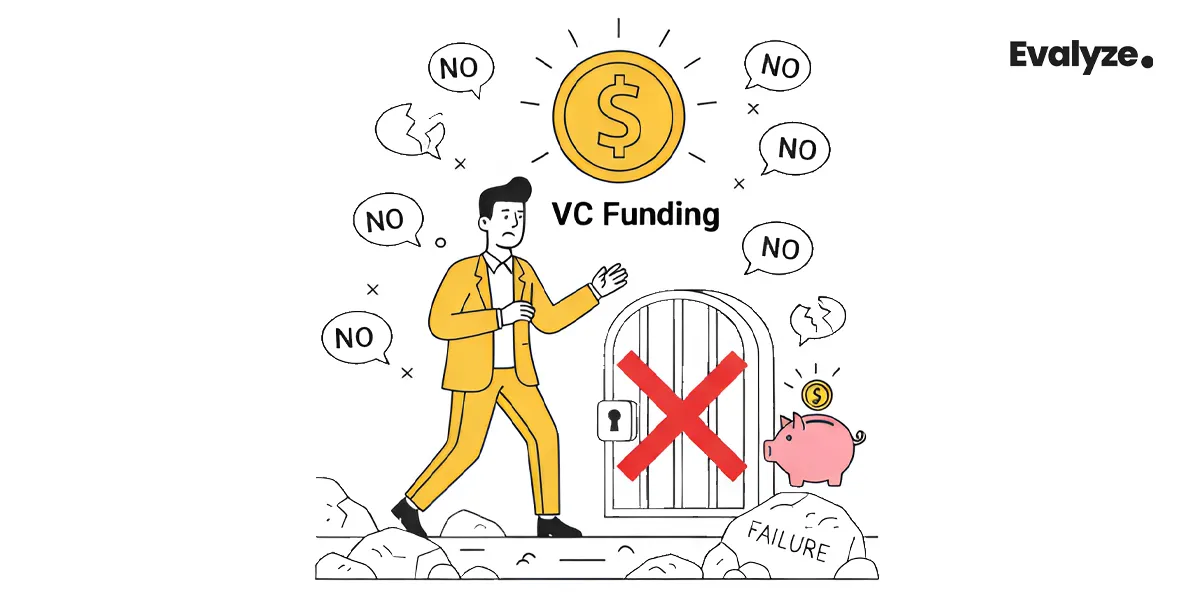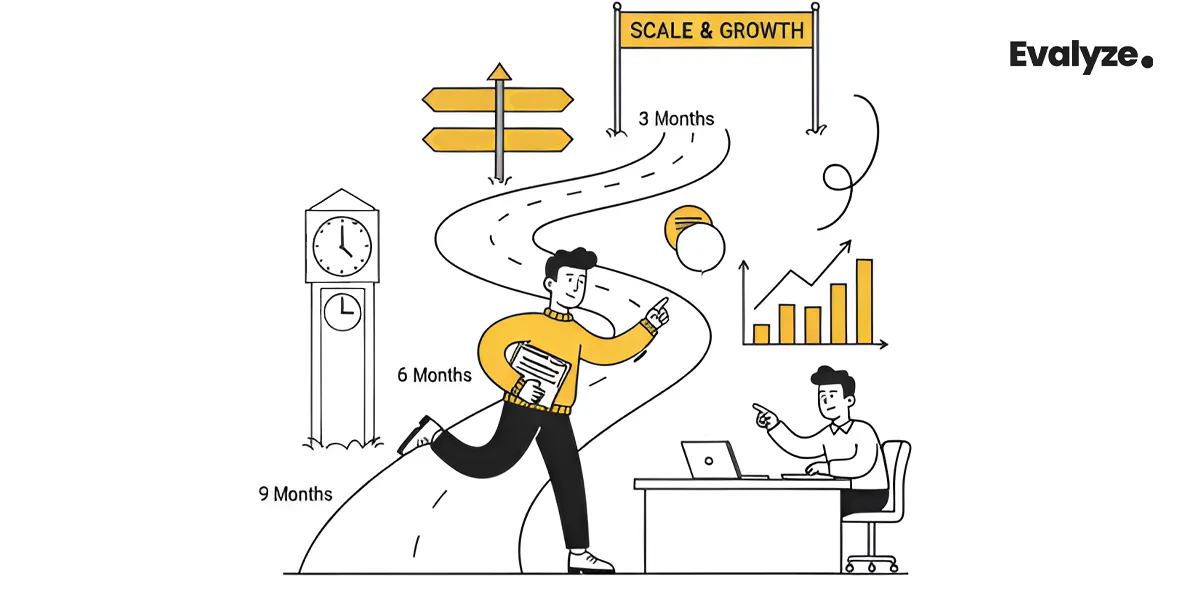11 Fundraising Myths That Are Holding Your Startup Back
A founder's guide to separating fundraising fact from the fiction that costs you funding.

It’s late. You’re staring at your pitch deck, paralyzed by a flood of conflicting advice. Should you add more financial projections? Is your network big enough? Is the product really ready?
This is the universal anxiety of the startup fundraising process. The entrepreneurial world is saturated with "conventional wisdom" that is often outdated, misleading, or just plain wrong.
These fundraising myths aren't harmless misconceptions; they are strategic traps that cause founders to waste time, lose confidence, and make critical errors that can jeopardize their entire venture.
| The Myth | The Reality |
|---|---|
| 1. You need a perfect product. | You need a validated MVP and a clear vision. |
| 2. A brilliant idea is enough. | Execution, traction, and a strong business model get funded. |
| 3. You need a huge network. | Quality relationships and strategic outreach trump a large network. |
| 4. You must be a slick salesperson. | Authenticity, passion, and deep knowledge are more persuasive. |
| 5. VC funding is the only option. | Angels, grants, debt, and bootstrapping are all viable paths. |
| 6. More money equals more success. | Capital efficiency and product-market fit are the true drivers of progress. |
| 7. A "no" means your business failed. | A "no" is data; it often means "not the right fit" or "not right now." |
| 8. Investors are your operational partners. | Investors are financial partners focused on ROI, not day-to-day management. |
| 9. Fundraising is a quick process. | Fundraising is a marathon, typically taking 3-9 months of persistent effort. |
| 10. Securing funding is the finish line. | Funding is the starting gun for the real race: scaling and execution. |
| 11. You need a 50-page business plan. | A compelling pitch deck with clear metrics is what investors actually read. |
Part 1: Myths About Your Readiness
These first fundraising myths are internal barriers, the misconceptions that stop you before you even start. The key is to shift your mindset from a quest for "perfection" to a relentless pursuit of "validation."

Myth 1: "I need a perfect product before I can raise money."
Many founders think investors want a flawless, feature-complete product. That mindset wastes time and delays feedback. While you polish features no one asked for, a competitor captures the market with a “good enough” solution.
Investors aren’t buying a finished product; they’re buying your vision, team, and early traction. What matters is a Minimum Viable Product (MVP) that solves a real pain point. A “perfect” but unvalidated product can even raise red flags, signaling you’re focused on building features, not a business.
Myth 2: "My idea alone will get me funded."
Ideas are cheap; execution is the real currency. Investors hear countless “brilliant” pitches. What wins funding is proof that your idea can scale, traction, a viable model, market insight, and a team that can deliver. Great startups rarely invent something entirely new; they refine and execute better.
That’s where your pitch deck matters. It’s the proof investors judge.
Evalyze.ai helps you turn ideas into investor-ready stories by analyzing your deck with its AI-powered Investor Readiness Score.
Based on 8,000+ successful raises, it highlights strengths, gaps, and next steps, shifting the spotlight from just the idea to the investable business.
Part 2: Myths About Your Network and Persona
This section debunks the myths surrounding the "who you are" and "who you know" aspects of fundraising, empowering founders who don't fit the stereotypical mold.

Myth 3: "You need a huge network or warm intros to get a meeting."
Founders often feel doomed without a Rolodex of VCs. Warm intros help, but they’re not the only path. A small, engaged network and well-crafted cold outreach can work just as well.
The key is focus: don’t blast 500 cold emails, research the 20 investors who actually fund your sector, stage, and geography. Show you’ve studied their thesis and why your startup fits.
Evalyze.ai is an AI-powered matching engine that analyzes 50+ data points and compares them against a database of 10,000+ investors, surfacing your best-fit matches with 95% accuracy. Each comes with a Match Transparency note so you can personalize outreach that lands more like a warm intro than a cold call.
Myth 4: "You have to be a slick, extroverted salesperson."
The stereotype of the smooth-talking founder is misleading. Investors care less about charm and more about conviction, expertise, and passion for the problem you’re solving. The best fundraisers are often great listeners who know their market inside out. Master your business deeply, and your confidence will come through naturally, no sales script required.
Part 3: Myths About Investors and Their Money
This section demystifies the world of venture capital and finance, providing a healthier, more realistic perspective on money and those who invest it.

Myth 5: "Venture Capital is the only 'real' funding for a startup."
Tech media headlines are dominated by massive VC rounds, creating the impression that this is the only path to building a significant company. The truth is that venture capital is a specific tool for a specific type of business: high-risk, high-growth ventures with the potential for a 10x+ return.
Chasing VC funding when your business model doesn't fit their criteria is a recipe for frustration. There is a rich ecosystem of alternative funding options, including angel investors, government grants, strategic partnerships, venture debt, and the powerful strategy of bootstrapping (funding growth with customer revenue). The right funding strategy depends entirely on your business model and long-term goals.
Myth 6: "More money raised means more success (and a longer runway)."
This is one of the most dangerous myths. Excessive funding, especially before achieving product-market fit, can be toxic. It creates immense pressure to scale prematurely, leading to inefficient spending, over-hiring, and a loss of fiscal discipline.
A larger seed round doesn't guarantee a longer runway; it often just prolongs the inevitable if the core business model is flawed. Capital efficiency, achieving more with less, is a far better indicator of a healthy startup than the size of its bank account.
Myth 7: "A 'no' from an investor means my business is a failure."
Rejection feels personal, but a "no" is simply a data point, not a final verdict. An investor's decision is complex. A "no" could mean poor fit with their investment thesis, a portfolio conflict, bad timing, or that they simply didn't grasp your market.
Successful founders hear "no" far more often than "yes". The key is to be persistent, learn from feedback, and understand that fundraising is a search for the right strategic partners, not a plea for a handout. It's a two-way street; you are also evaluating if the investor is the right long-term partner for your company.
Part 4: Myths About the Process and Post-Funding Life
This final section sets realistic expectations about the fundraising journey and what happens after the money is in the bank, dispelling the "happily ever after" narrative.

Myth 8: "Investors are your partners and are there to help you run the business."
Founders often hear investors described as "partners" and expect them to be deeply involved mentors. The reality is that an investor's primary job is to generate a return for their Limited Partners (LPs). Their role is one of governance and strategic oversight, not day-to-day management.
They are a board member, not a co-founder. While some investors provide immense value, you are the one who knows your business best, and relying on a VC for operational advice can be a mistake.
Myth 9: "The fundraising process is quick and straightforward."
Media stories often compress the fundraising journey into a single, exciting event. In reality, fundraising is a grueling marathon.
A typical seed or Series A round can take anywhere from 3 to 9 months from start to finish. The process involves countless meetings, deep due diligence, and intense negotiations, all of which take significant focus away from running the business.
Myth 10: "Once I secure funding, I've made it."
Raising a round of funding is not the finish line; it's the starting gun for a much harder race. The money comes with a new set of intense expectations for growth and reporting. You've essentially hired a new, very demanding boss.
The real work of deploying that capital effectively and building a sustainable business has just begun. Many well-funded startups fail because they can't handle the post-funding pressure.
Myth 11: "Investors want to see a huge, complex business plan and financial model."
An old-school belief persists that you need a 50-page business plan. The reality is that early-stage investors rarely read them. They want a clear, concise, and compelling pitch deck (typically 15-20 slides) that tells a powerful story.
The financial "model" they care about isn't a massive spreadsheet; it's your understanding of the key metrics that drive your business: Customer Acquisition Cost (CAC), Lifetime Value (LTV), and gross margins.
They want to see that you understand the fundamental levers of your business, not that you can create a fictional five-year forecast.
Conclusion
Successful fundraising isn't about a mythical playbook. It's about building a real business and communicating its value with clarity, replacing perfectionism with validation, broad networking with strategic outreach, and hype with tangible traction.
The journey is hard, but by shedding these myths, you can navigate it from a position of strength. Focus on what truly matters: solving a real problem for your customers and building a business of lasting value. A strategy built on reality, not misconceptions, is your key to success.
More Articles
Crafting Seed to Series A Pitch Deck: A Slide-by-Slide Guide
The template we’re analyzing today is free, customizable Canva pitch deck provides a solid foundation for startups in tech-driven sectors
February 10, 2025
Fundraising 101: How to Raise Your First Round
Securing initial funding in the uncertain landscape is a challenge for startups.
February 27, 2025